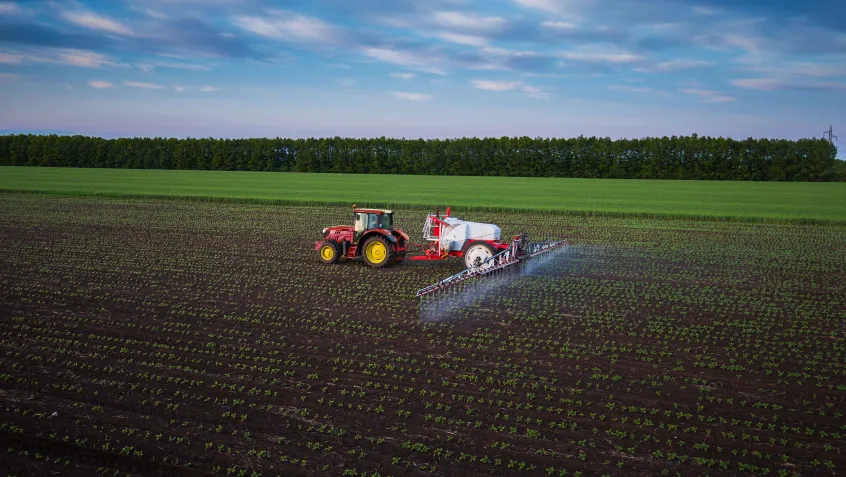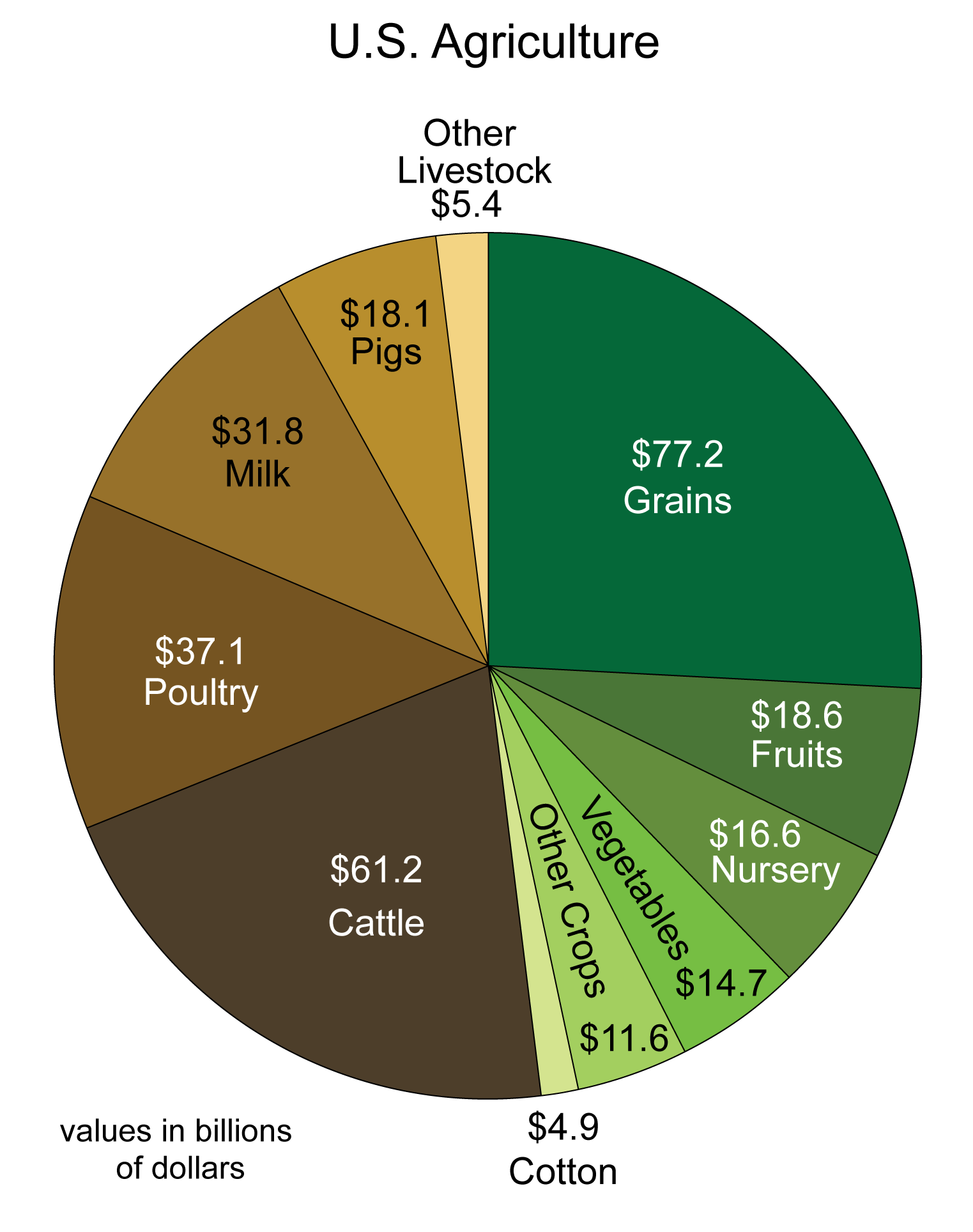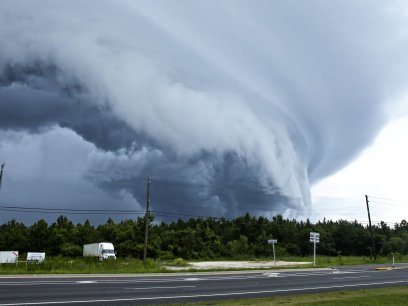
Did you know?
- The US agriculture sector produces over $300 billion per year in commodities.
- Weeds cause the largest loss in global crop production (34%), followed by insects (18%), and diseases (16%).
Plants require carbon dioxide to grow and could not survive without it. However, a warming climate resulting from increased emissions of carbon dioxide into the atmosphere will make it more difficult for farmers to grow crops and raise animals in some places. A changing climate impacts agriculture directly through changes in the frequency and intensity of extreme weather events, and indirectly through the spread of stressors such as weeds, diseases, and insect pests.
Heavier and more frequent precipitation events can damage plant roots and erode soils, which can prevent crops from growing. Extreme flooding events also harm crops and reduce yields. For example, a flood along the Mississippi River in 2008 that occurred right before the harvest period for many crops caused an estimated $8 billion loss for farmers.
Crops tend to grow faster in warmer temperatures, which reduces the amount of time that plants have to grow and mature. This can reduce crop yields when soils are not able to provide nutrients at the rates required for faster-growing plants. Excessive heat coupled with drought in some areas is also a challenge, as reduced water availability makes it more difficult to keep up with the water demands of some crops.
Agriculture production in the United States is also largely impacted by weeds, insects, and diseases. Controlling weeds alone costs the US more than $11 billion per year. A climate with warmer temperatures, wetter conditions in some places, and increased carbon dioxide levels will increase the presence of weeds, pests, and fungi that thrive under these conditions. For example, the European corn borer pest has increased its reproductive rates in the northern and southern Corn Belt due to higher winter and summer temperatures.
Climate disruptions to agriculture, including extreme weather impacts and the spread of stressors, have increased over the past 40 years and are projected to continue increasing by mid-century and beyond. It is important for farmers to understand how changing climate patterns may impact their operations so that they can develop adaptation strategies to meet agricultural demands.
Learn More
- US agriculture includes 300 different commodities with a nearly equal division between crop and livestock products. This chart shows a breakdown of the monetary value of US agriculture products by category.

What You Can Do
- Depending on where you live, a few smart landscaping choices can help you weather hot and cold temperatures, chilly winds, and water shortages. Save water, energy, and money at home by following these tips for building a better yard.
Sources:
- Melillo, Jerry M., Terese (T.C.) Richmond, and Gary W. Yohe, Eds. 2014. Climate Change Impacts in the United States: The Third National Climate Assessment. Washington: U.S. Global Change Research Program. http://nca2014.globalchange.gov/.
- USDA. 2013. "Climate Change and Agriculture in the United States: Effects and Adaptation." USDA Technical Bulletin 1935. Washington, DC. 186 pages. http://www.usda.gov/oce/climate_change/effects_2012/CC%20and%20Agricult…;
- US EPA. 2017. "Climate Impacts on Agriculture and Food Supply." Accessed August 21, 2018. https://19january2017snapshot.epa.gov/climate-impacts/climate-impacts-a…


